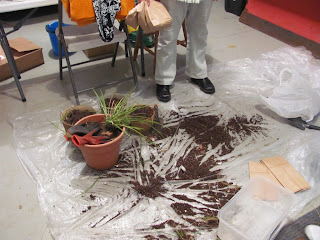As hobbies go, gardening is one of the least expensive as far as dollars spent. The rewards go far beyond the momentary satisfaction of many hobbies. There is something primal about digging in the soil that takes us back to our ancestral roots, when they had to be hunters and gatherers to survive. The gatherers became gardeners, though I doubt they called themselves gardeners. Besides, what other hobby can, not only feed your soul, it can also feed your belly? As I was growing up, everyone I knew had a garden. If you didn’t have a garden, you probably didn’t eat unless you were rich enough to buy everything at the store. I didn’t know any rich people.
You have heard the saying, “You can take the boy off the farm but you can’t take the farm out of the boy.” That goes for girls too. As the granddaughter, daughter and wife of farmers, I feel very connected to the soil. It would be difficult for me to live in an apartment where I could not get out and get my hands dirty planting something. I firmly believe that, because we have taken so many off the farm and herded them into cities where they can find jobs, this is why we are seeing a great resurgence of hobby farmers, wannabes and urban gardeners. They may be generations removed from their agricultural roots but the desire for dirt under their nails is still there. They may say this resurgence is because of a desire for fresher, locally grown food, but we gardeners know the truth.
In addition to the garden we had fruit trees and a strawberry bed. We children didn’t dare say we were bored or we got busy pretty quickly picking produce of one kind or another OR pulling weeds. The weed pulling was a nice source of income for a small child, and we learned arithmetic (or is it numbers or math these days?) to boot. The reward for pulling 100 weeds was a penny. Yes, a penny per hundred weeds! Of course, in those days a nickel would buy a bottle of pop and 2 cents would buy a comic book (my money usually went for the comics). We learned our numbers and earned some cash, Mom got her garden cleaned up as well as some time to herself and I had dirt under my fingernails all summer. This was the only job I did at home for which I got paid. Everything else you did because you were part of the family and you just did your share. I suspect my mom hated pulling weeds!
We had a great screened-in porch, which was shaded, and we got lovely breezes to cool us as we worked at either snapping beans, shelling peas, pitting cherries or peeling apples. Frequently, Grandma Hawley would come to help. She lived in town then and I now realize she just needed an excuse to get back to the farm and do necessary garden work. She did have a garden in town, but it was small. Besides, we all know that work is more fun when it is shared. I never felt like I was working when there was gardening to be done, whether it was pulling weeds, planting or harvesting.
Meanwhile, for the next few months, don’t be surprised at the grime on my hands, which would be dirt under my fingernails if my nails were longer.
Julie Johnston is photographer for The Fairfield Ledger.






